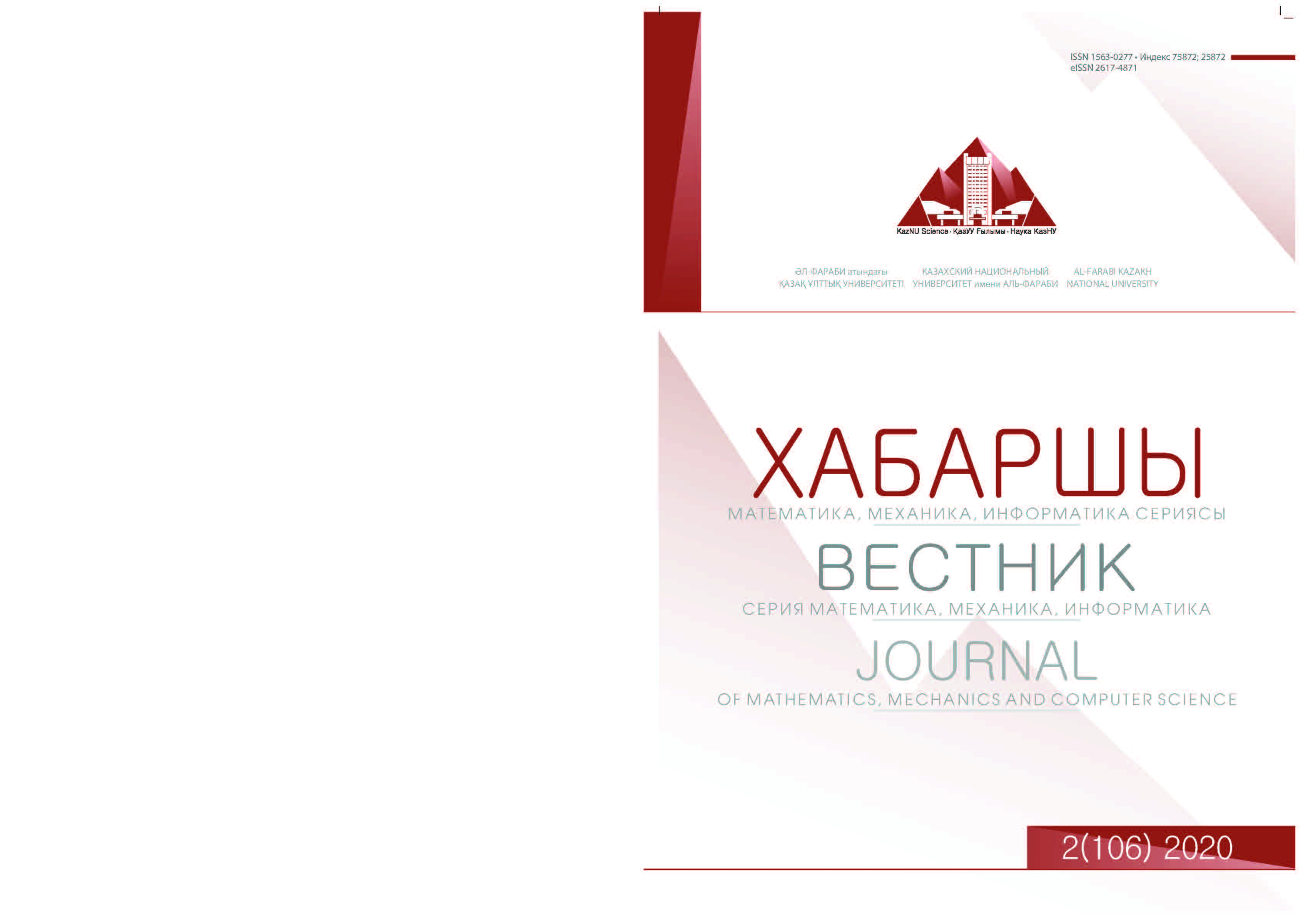Modelling the influence of electron concentration on MHD turbulence by les
DOI:
https://doi.org/10.26577/JMMCS.2020.v106.i2.08Keywords:
Ionosphere E-layer, concentration of electron, magnetohydrodynamics, Taylor-Green vortex problem, finite difference methodAbstract
In the present work, a three-dimensional mathematical model of the influence of electron concentration on the dynamics of the E-layer of the ionosphere
under nonisothermal conditions is developed. The proposed method shows high computational efficiency and good quality estimates. To approximate the solution of the convective and
diffusion terms of the intermediate velocity field, the finite difference method is used in combination with a five-diagonal matrix, which made it
possible to achieve fourth-order accuracy in space and third-order accuracy in time. To solve the pressure, the Poisson equation is solved, which ensures
the fulfillment of the continuity equation. The Poisson equation is transformed from physical space to spectral space using the Fourier transform.
The equation for the temperature and electron concentration is solved using the Adams-Bashforth method. Before modeling the influence of the magnetic field
on MHD turbulence, to test the adequacy of the numerical algorithm, the Taylor Green test problem was performed for various Reynolds numbers,
where it agrees well with the reference spectral method and analytical solutions. As a result of the simulation, the temperature contours and
turbulent flow isotherms for various Stuart numbers were obtained. The developed numerical algorithm can be used to model the attenuation of ionospheric turbulence at various
Stuart numbers.
References
[2] Fejer B.G. and Kelley M.C. "Ionospheric Irregularities," Rev. Geophys. Space Phys. 18,(1980): 401-454.
[3] Huba J. D., Hassam A. B., Schwartz, I. B., Keskinen, M. J. "Ionospheric turbulence - Interchange instabilities and chaotic fluid behavior," Geophysical Research Letters 12,(1985): 65-68.
[4] Saltzman B. "Finite Amplitude Free Convection as an Initial Value Problem-I," J. Atmos. Sci 19,(1962): 329.
[5] Lorenz E.N."Deterministic nonperiodic flow" J. Atmos. Sci. 20,(1963): 130-141.
[6] Hassam A. B., Hall, W., Huba, J. D., and Keskinen, M. J. "Spectral characteristics of interchange turbulence," J. Geophys.
Res.,91(13), (1986):513-522.
[7] Benard H., "Les tourbillons cellulaires dans une nappe liquide" Rev. Gen. Sci. pures et appl. 11(1900): 1261-1271, 1309-1328.
[8] Rayleigh L., "On the convective currents in a horizontal layer of fluid when the higher temperature is on the under side,"
Phil. Mag. 32(1916): 529-546.
[9] Burattini P., Zikanov O. and Knaepen B., "Decay of magnetohydrodynamic turbulence at low magnetic Reynolds number"
Fluid Mechanics 657(2010): 502-38.
[10] Knaepen B., Kassinos S. and Carati D., "Magnetohydrodynamic turbulence at moderate magnetic Reynolds number"
Fluid Mechacincs 513(3)(2004): 199-220.
[11] Moreau, R., "Magnetohydrodynamics" Kluwer Academic (Dordrecht: 1990).
[12] Davidson, P. A., "An Introduction to Magnetohydrodynamics" Cambridge University Press (Cambridge: 2001)
[13] Vorobev, A., Zikanov, O., Davidson, P., Knaepen, B., "Anisotropy of magnetohydrodynamic turbulence at low magnetic Reynolds number," J.Physics of fluids, 7(2005): 125105.
[14] Saijadi, H., Amri Delouei, A., Sheikholeslami, M., Atashafrooz., M., Succi, S., J.Physica A 515 (2019):474-496.
[15] Abdibekova, A., Zhakebayev, D., Abdigaliyeva, A.,Zhubat, K. "Modeling of turbulence energy decay based on hybrid methods," J. Engineering Computations 35(5)(2018): 1965-1977.
[16] Zhakebayev D., Zhumagulov B. and Abdibekova A., "The decay of MHD turbulence depending on the conductive prop- erties of the environment," Magnetohydrosynamics 50(2)(2014): 121-38.
[17] Taylor G.I. and Green A.E., "Mechanism of production of small eddies from large ones," Proceedings of the royal society, Mathematics and physical sciences 158(895)(1937): 499-521.




